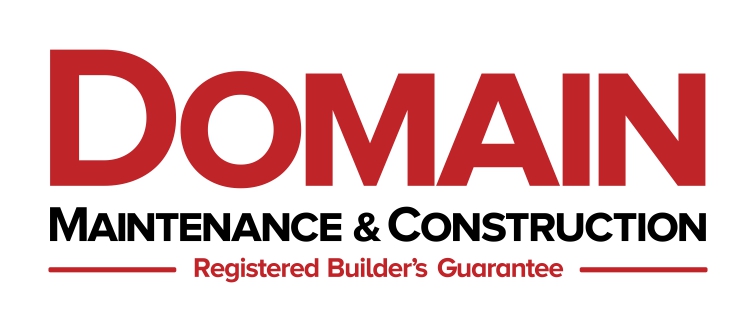Did You Know?
Domain Maintenance and Construction – Myth Busting
Domain Maintenance and Construction – Myth Busting
There are many dangerous assumptions in the building industry.
The worrying part is that a lot of those assumptions come from the supposed experts.
And when the experts make such assumptions – what hope do the clients have?
At Domain Maintenance and Construction, we don’t deal in assumptions and we want to play our small role in ensuring all our customers and potential clients are completely aware of building regulations.
In this section, we debunk some of the most common myths.
MYTH 1: ANY TRADESPERSON IS AUTHORISED TO DO ANY TYPE OF BUILDING WORK
Wrong.
Fact: The building industry in Victoria is regulated by the Victorian Building Authority (VBA).
Fact: In Victoria, building practitioners must be registered with the Victorian Building Authority to:
- perform domestic building work that costs more than $10,000 (including labour and materials)
- carry out re-blocking, restumping or demolishing work, remove a home, or carry out any building work that requires a permit, regardless of cost
- provide more than one type of building work (such as plastering and painting) that costs more than $10,000 (including labour and materials).
What does this mean for you?
Make sure you engage a registered building practitioner when you want this type of building work carried out. This will ensure your project is completed by someone with the necessary qualifications and expertise. Some un-registered builders will be vague and misleading, so make sure you ask to see their photo ID card.
The dangers of using an unregistered Building Practitioner extend to the homeowner, as the work carried out may void any insurance cover on the home.
More importantly, an unregistered Building Practitioner is almost surely without any insurance cover, as a Registered Building Practitioner MUST have insurance to satisfy registration requirements under Victorian law.
For further reading head to: http://www.vba.vic.gov.au/consumers/building-for-consumers
MYTH 2: A REGISTERED BUILDING PRACTITIONER IS AUTHORISED TO DO ANY TYPE OF BUILDING WORK
Wrong.
Your Building Practitioner MUST be registered for the class of work you want him to perform and is only authorised to perform that work.
The short version:
There are two types of Building Work: Commercial Building work and Domestic Building Work.
There are 11 types of classes of Registration for Building Practitioners for Commercial Building Work – 10 of these classes are Limited to perform certain work whilst 1 class is Unlimited and there are no restrictions to the type of work that can be performed. See PDF: http://www.vba.vic.gov.au/__data/assets/pdf_file/0006/44844/What-is-Commercial-Building-work.pdf
There are 29 classes of Registrations for Building Practitioners for Domestic Building Work – 28 of these classes are Limited to perform certain work whilst 1 class is Unlimited and there are no restrictions to the type of work that can be performed. See PDF: http://www.vba.vic.gov.au/__data/assets/pdf_file/0018/44550/What-is-Domestic-Building-work.pdf
The long version:
- Building Classification Codes exist for many reasons and are featured in The National Construction Code.
- There are 10 Building Classifications e.g. Class 1 buildings are described as Houses, Guest House, Townhouse and Terrace House, Class 2 Building are apartments etc. See the full list here: vba.vic.gov.au/practitioners/building-classification-codes
As previously stated, there are two types of Building Work; Commercial Building work and Domestic Building Work.
What is Commercial Building Work?
Persons registered as Commercial Builders (Unlimited) are responsible for managing and arranging the carrying out of all components of building work for the construction of commercial buildings and structures (Class 2–9 buildings and structures, and Class 10b buildings not associated with a domestic building, as classified by the Building Code of Australia), or classes of that work, such as: Structural fit-out work, Non- structural fit-out work, Structural landscaping work, Construction of shade structures work and the erection of signs work.
There are 11 classes of Registrations for Commercial Building Practitioners – 10 of these are Limited to performing certain type of work and 1 is Unlimited. See here: http://www.vba.vic.gov.au/practitioners/building-registrations/commercial-builder
What is Domestic Building Work?
Domestic building work is work associated with the construction, renovation, improvement or maintenance of a home.
Persons registered in the class of Domestic Builder (Unlimited) are responsible for carrying out or managing or arranging the carrying out of all components of domestic building work for the construction, renovation, improvement or maintenance of a home (class 1, 2, and 4 buildings, and associated class 10 buildings, as classified in the Building Code of Australia).
There are 29 classes of Registrations for Domestic Building Practitioners – 28 of these are Limited to performing certain type of work and 1 is Unlimited. See here: http://www.vba.vic.gov.au/practitioners/building-registrations/domestic-builder
The dangers of using an unregistered Building Practitioner extend to the homeowner, as the work carried out may void any insurance cover on the home.
With so many classes, what does this mean for you?
Make sure when you engage a building practitioner he is registered in the class of work involved to perform your job. This will ensure your project is completed by someone with the necessary qualifications and expertise. Some un-registered builders will be vague and misleading, so make sure you ask to see their photo ID card.
MYTH 3: DOMESTIC BUILDING INSURANCE IS NOT MY CONCERN
Wrong.
Domestic building insurance (DBI) provides mandatory cover for homeowners who are building or renovating in Victoria.
Builders are required to purchase DBI on behalf of the homeowner for all domestic building projects over $16,000.
Besides being a stringent legal requirement, working with a builder who has the relevant insurance offers several advantages:
- Domestic building insurance covers the client if, before work is complete, the practitioner is deceased, is declared insolvent or disappears.
- It covers costs up to $300,000 to fix structural defects for six years, and non-structural defects for two years.
- In all other cases, it is up to the building practitioner to fix or complete works, or to pay any costs awarded.
What’s this mean for you?
Your builder or tradesperson must provide you with a copy of the policy and a certificate of insurance covering your property before you pay a deposit or any other money.
MYTH 4: PUBLIC LIABILITY INSURANCE IS NOT MY CONCERN
Wrong.
This insurance will protect you or third parties against any damage the tradesperson may cause.
What’s this mean for you?
Before you engage your builder, ask your builder or tradesperson to provide you with a copy of their public liability insurance policy..
MYTH 5: ANY PLUMBER CAN CARRY OUT PLUMBING WORKS
Wrong.
There is a big difference between registered plumbers and licensed plumbers.
Plumbing practitioners are every bit as regulated as domestic and commercial builders.
The Building Act 1993 regulates plumbing practitioners, plumbing work and standards.
The VBA is the body responsible for upholding these standards and licenses plumbers to ensure they carry out plumbing work competently and safely.
To do any plumbing work in Victoria, a plumbing practitioner must be:
- Licensed by the Victorian Building Authority or
- Registered by the VBA (or have provisional registration) and working under the supervision of a licensed plumber or
- In training under the supervision of a licensed plumber.
It is a legal requirement for all licensed plumbers to issue a certificate of compliance upon the completion of any plumbing related work.
A licensed plumber must hold insurance that protects you in case of any defective plumbing work.
A compliance certificate is issued by a licensed plumber to certify the work they do complies with the relevant plumbing standards, codes and regulations.
In Victoria, compliance certificates must be issued upon completion of the following:
- any plumbing work that has a total value of $750 or more, including labour, materials, appliances, and/or fixtures, regardless of who they were purchased by
- all work carried out on below ground sanitary drains
- all work involving the installation, relocation, replacement or conversion of any gas-using appliance
- all work involving the installation, modification or relocation of consumer gas piping
- all work involving the construction, installation, relocation, alteration or replacement of cooling towers.
What’s this mean for you?
Make sure you engage a licensed or registered practitioner when you want plumbing work carried out.
All registered and licensed plumbers are issued with a Photo ID card that lists the type of work they are eligible to do. All practitioners should carry this ID and you can request to see it at any time. You can also check if a plumber is licensed or registered online, using the VBA directory – Find a Practitioner.
All work subject to a Compliance Certificate carries insurance to protect the owner/consumer against defective work by a plumbing practitioner. You should retain your Compliance Certificate for six (6) years as evidence of your cover.




